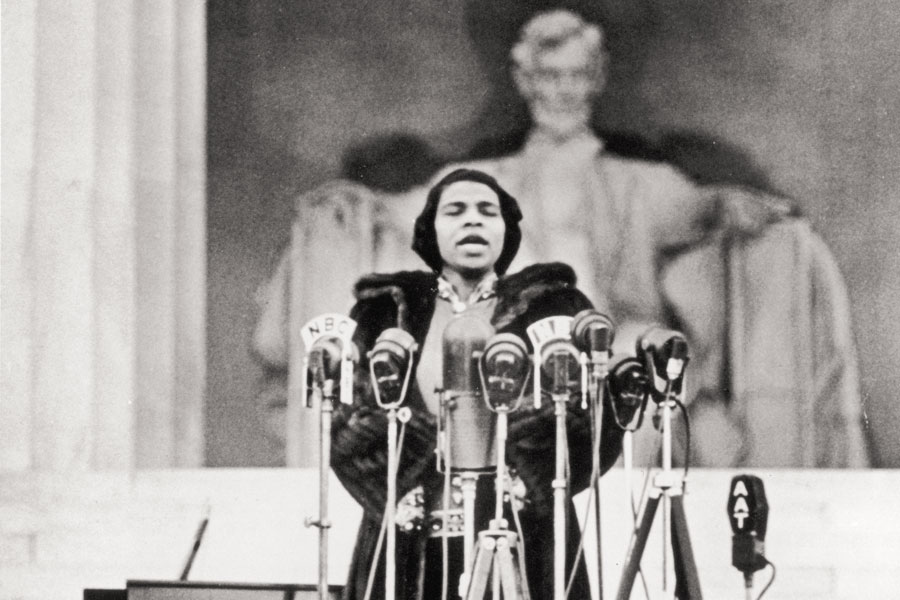Eighty years ago this month, the world’s most famous singer became a civil rights icon.

Marian Anderson at her defining moment, Easter 1939. Photograph by Hulton Archive/Stringer/Getty Images
One of the pitfalls of living in a city so well stocked with Historical Characters of Great Import (HCGIs) is that many compelling figures fade into the collective shadow of white guys in breeches. Case in point: When the U.S. Treasury announced three years ago that Marian Anderson would appear on the new $5 bill, the typical response — particularly among younger Philadelphians — was a resounding “Wait, who?”
Born in South Philly in 1897, Anderson was the 20th century’s Beyoncé, an opera superstar who sold out concerts around the globe, entertained presidents and kings, and brought audiences to tears singing Verdi and Schubert along with black spirituals. Her warm, clear contralto was famously described by conductor Arturo Toscanini as a voice heard “once in a hundred years.”
Though she rose to fame in (and despite) Jim Crow America, Anderson rarely discussed the indignities of racism that she endured. But 80 years ago this month, the course of history was permanently altered. After the Daughters of the American Revolution refused Anderson the stage at Washington, D.C.’s segregated Constitution Hall, First Lady Eleanor Roosevelt helped arrange for her to sing instead at the Lincoln Memorial on Easter Sunday 1939 — turning the world’s most famous singer into a civil rights icon.
Read more at:
https://www.phillymag.com/news/2019/04/09/marian-anderson-philadelphia/
